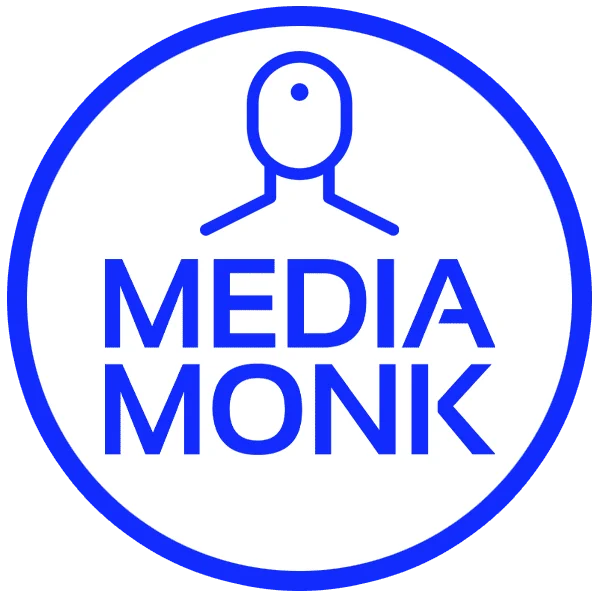Table of Contents
Welcome to our comprehensive guide on how to write a compelling blog post in 7 easy steps. Whether you’re a seasoned blogger or just starting out, these tips will help you create engaging content that resonates with your audience and drives organic traffic to your website. At Media Monk, we understand the importance of high-quality content, and we’re here to share our expertise with you. Let’s dive in and explore the essential elements of crafting a blog post that captivates readers and boosts your online presence.
Step 1: Research Your Audience and Topic for a Compelling Blog Post
When it comes to writing a compelling blog post, the first step is to thoroughly research your audience and topic. Understanding who your audience is and what they’re interested in is crucial for creating content that resonates with them. Take the time to explore the demographics, interests, and pain points of your target audience. This will help you tailor your content to their needs and preferences, making it more likely to capture their attention and keep them engaged throughout the post.
In addition to understanding your audience, it’s essential to conduct thorough research on your chosen topic. This means delving into the latest trends, news, and developments related to your subject matter. By staying informed and up-to-date, you’ll be able to provide valuable insights and information to your readers. This will not only establish your credibility as a knowledgeable source but also keep your content fresh and relevant.
Once you have a solid grasp of your audience and topic, it’s time to craft a headline that grabs attention and entices readers to click through. Your headline should be concise, clear, and compelling, using your focus keyword and LSI keywords to optimize it for search engines. Consider using numbers, questions, or power words to make your headline more engaging. A strong headline sets the tone for your entire blog post and is the first step in capturing the interest of your audience.
Step 2: Craft a Captivating Headline
Your blog post’s headline is the first thing readers see, so it’s crucial to make it attention-grabbing and compelling. Use your focus keyword and LSI keywords to optimize your headline for search engines while also piquing the interest of potential readers. Consider using numbers, questions, or power words to make your headline more engaging. A strong headline sets the tone for your entire blog post and entices readers to click through and read more.
- Use Emotional Triggers: Words that evoke curiosity, urgency, or excitement can make your headline more appealing.
- Include Numbers and Lists: Headlines with numbers (like “7 Tips for…”) are proven to attract attention. Lists provide a clear expectation of the content structure.
- Ask a Question: Questions engage the reader’s curiosity and invite them to seek answers in your post.
- Be Specific: Specific headlines give a clear idea of what the post is about, which can attract more targeted readers.
- Use SEO-Friendly Keywords: Incorporate your primary keyword in a natural, reader-friendly way to improve search engine rankings.
Step 3: Structure Your Content for Readability
When it comes to crafting a compelling blog post, the content is at the heart of it all. It’s essential to focus on providing valuable information, insights, and actionable tips that directly address your audience’s pain points and interests. By doing so, you not only provide value to your readers but also establish yourself as an authority in your niche. Additionally, incorporating your focus keyword and LSI keywords naturally throughout your content helps optimize it for search engines, improving its visibility and reach. However, it’s important to maintain a conversational tone throughout, ensuring that your content remains engaging and relatable to your audience.
To further enhance the appeal of your blog post, consider integrating personal anecdotes, case studies, and real-life examples into your content. This not only adds a human touch to your writing but also makes the information more relatable and easier to digest for your readers. By presenting your content in a more personal and engaging manner, you can effectively capture and maintain the attention of your audience, increasing the overall impact of your blog post.
Ultimately, the goal of structuring your content for readability is to create a blog post that informs, entertains, and inspires your readers. By focusing on the quality and relevance of your content, you can effectively captivate your audience and drive meaningful engagement. This, in turn, can lead to increased organic traffic to your website and a stronger online presence, ultimately contributing to the overall success of your blog.
Step 4: Write Engaging and Informative Content
The heart of any compelling blog post lies in its content. Focus on providing valuable information, insights, and actionable tips that address your audience’s pain points and interests. Use your focus keyword and LSI keywords naturally throughout your content to optimize it for search engines while maintaining a conversational tone. Share personal anecdotes, case studies, and real-life examples to make your content relatable and engaging. The goal is to create a blog post that informs, entertains, and inspires your readers.
- Start with a Strong Introduction: Open with an anecdote, a surprising fact, or a provocative question to hook the reader.
- Use Subheadings and Bullet Points: Break up the text for better readability. Subheadings guide readers through your content, and bullet points simplify complex information.
- Incorporate Storytelling: Stories can make your content more relatable and memorable.
- Include Data and Statistics: Adding credible data supports your arguments and adds value to your content.
- Add Visual Elements: Images, infographics, and videos can illustrate your points and keep readers engaged.
Step 5: Optimize for SEO
Optimizing your blog post for search engines is essential for driving organic traffic to your website. Use your focus keyword and LSI keywords strategically in your title, headings, meta description, and throughout your content. Incorporate internal and external links to relevant sources and previous blog posts to improve your post’s authority and SEO value. Additionally, optimize your images with descriptive alt text and file names to enhance your post’s visibility. By following SEO best practices, you can increase your blog post’s chances of ranking higher in search results.
- Keyword Placement: Include your main keyword in the first 100 words, and use it naturally throughout the text.
- Use Long-Tail Keywords: These are less competitive and can attract more qualified traffic.
- Optimize Meta Descriptions: Write a compelling meta description with your primary keyword to improve click-through rates.
- Optimize for User Experience: Ensure your website is mobile-friendly, has fast loading times, and offers easy navigation.
- Use Internal and External Links: Link to your own relevant content and authoritative external sources to add context and value.
Step 6: A Compelling Blog Post Demands An Equally Compelling Call-to-Action
Every blog post should include a clear and compelling call-to-action (CTA) that prompts readers to take the next step. Whether it’s subscribing to your newsletter, downloading a resource, or engaging with your content, your CTA should guide readers towards a specific action. Use persuasive language and visually appealing buttons to capture your audience’s attention and encourage them to act. A well-crafted CTA can drive conversions and nurture leads, making your blog post even more impactful.
- Be Clear and Concise: Your CTA should be straightforward and tell readers exactly what to do.
- Create Urgency: Encourage immediate action with phrases like “Download now” or “Offer ends soon.”
- Make It Stand Out: Use design elements like buttons or contrasting colors to make your CTA visually prominent.
- Offer Value: Make sure your CTA offers something valuable and relevant to the reader.
- Test Different CTAs: Experiment with different wording, placements, and styles to see what works best.
Step 7: Proofread and Edit Thoroughly
Before publishing your blog post, take the time to proofread and edit it thoroughly. Check for spelling, grammar, and punctuation errors, and ensure that your content flows smoothly and cohesively. Consider asking a colleague or hiring a professional editor to review your post and provide valuable feedback. Pay attention to formatting, style, and tone to ensure that your blog post represents your brand effectively. By polishing your content, you’ll present a professional image and deliver a top-quality blog post to your audience.
- Check for Grammar and Spelling: Use tools like Grammarly or Hemingway Editor for initial checks.
- Read Aloud: Reading your post out loud can help catch awkward phrasing and inconsistencies.
- Get a Second Opinion: Having another person read your content can provide a fresh perspective and catch errors you might have missed.
- Check Consistency: Ensure consistent use of tense, voice, and style throughout your post.
- Final Review: Give your post one last review before publishing to ensure it’s polished and ready for your audience.
Following these expanded steps will help you create blog posts that not only attract readers but also engage and convert them, enhancing your overall content marketing strategy.








